
Facebook Twitter Pinterest Flickr Google+ YouTube Instagram
Written on: March 17th, 2013 by: cathay in Archives, Q & A's
Q: “I can’t afford an accountant and heard that there might be some free or low-cost tax preparation help. Is this through the library? Can you tell what I need to do to get help?”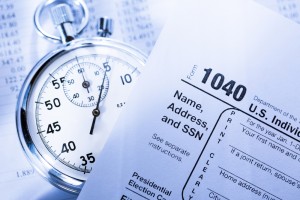
Federal and state income taxes are coming due. This year, it’s on Monday, April 15.
USA.gov has annual filing dates listed on their helpful site, and includes information about who should file, when and how. This is also a great starting place for finding details about tax preparation assistance programs, such as those commonly offered through the public libraries in Delaware. Generally, most tax preparation assistance is offered from the end of January/beginning of February through April 15 each year. Let’s start with an overall view and narrow it down to our local Delaware Library level.
The U.S. Internal Revenue Service provides information about free tax preparation assistance programs. You can also see information about these programs by state on USA.gov’s site. They are provided through two programs: the IRS Volunteer Income Tax Assistance (VITA) and the Tax Counseling for the Elderly (TCE) Programs. Assistance is given to those who qualify based upon income and, for the TCE Program, by age. “[P]riority assistance [is given] to people who are 60 years of age and older, specializing in questions about pensions and retirement issues unique to seniors.”
Well-known non-profit organizations have expert volunteers who assist the VITA and TCE Programs to provide free tax help in as many locations aws possible, such as the American Association of Retired Persons (AARP), who works with the TCE Program. Here is AARP’s page for locating their free tax prep services by county in Delaware and what you need to know in order to qualify, as well as what to bring with you when you go to your appointment (look about halfway down the page).
Most of Delaware’s libraries provide online information about these tax prep programs, such as through New Castle County public libraries’ and Sussex County public libraries’ sites. Another calendar, provided through Dover Public Library’s site, allows you to search for the topic you are interested in. If you put in “tax” in the keyword search (upper left side) and press ‘enter’, you can see that there are regularly-scheduled tax assistance programs offered. Note that you must make an appointment for many of these tax preparation assistance programs.
You may be interested in knowing that you might qualify for free software to assist you in preparing your tax returns online. The IRS has provided a listing of “Free File Software” for those whose adjusted gross incomes are $57,000 or less. They also have their tax forms linked on this page for easy access.
The State of Delaware’s Department of Revenue also has online information about free tax filing software for those who qualify. Each listed software is annotated with the income level requirements right on this page.
Just so you know, the Federal government started accepting most types of tax returns as of January 30 this year. If you anticipate a return on your taxes, this may be good news.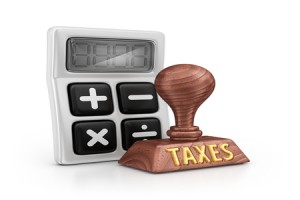
It’s also interesting to note that more than 80% of tax payers filed electronically in 2012 and in light of online access and filing, it’s important to keep yourself protected. USA.gov offers good advice about being aware of potential scammers. See the bottom of this webpage for Scams and Fraud information.
Although librarians are not tax accountants or advisors, we can certainly help you find the information you need to get help with taxes, and we’re glad to! Please feel free to ask us in person at your Delaware public library or online through our live chat service, Ask a Librarian Delaware, anytime! Thank you for your question!
Written on: March 10th, 2013 by: cathay in Archives, Q & A's
Q: “I’d like to know if Zombie Ants are real, and what makes them Zombies?”

Thank you so much for your great question! Like you, I had not heard of zombie ants until recently and wanted to find out more.
The fungus that causes certain types of ant to behave in ways that seem zombie-like is called Ophiocordyceps unilateralis. Although it has been around for many millions of years, as reported on ScienceDaily, it was discovered and identified in tropical forests such in Africa, Brazil and Thailand fairly recently An international research team led by scientist David Hughes of Penn State University, wrote the first paper in 2009 describing the effect of the fungus on an ant. and to assure us this fungus targets a specific host species, the Camponotus leonardi ant (and does not affect humans).
As Dr. Hughes’ findings show, such as described in Scientific American and ScienceDaily, the fungus spores affect ants’ brains and behavior. The ant who is infected will typically climb about halfway up the tropical canopy and bite on the underside of a leaf so hard as to be locked there with its mouth open. This is an ideal location for the fungus to grow and mature, and it usually does by sprouting a stalk out of the ant’s head. On this, the fungus creates more spores as to keep its own species alive. “In other words,” reported Katherine Harmon of the Scientific American, “the fungus was transported via the zombie ant to its prime location.” And in this way the fungus continues to thrive.
More information and images about the zombie ant can be seen on PennState’s ScienceCast (YouTube).
Most recently, Dr. Hughes and his team have reported that Ophiocordyceps unilateralis has its own enemy; another fungi. According to Discover Magazine online, this fungi is not much help to the ant who is infected, however, since “it only infects the Ophiocordyceps after the ant has died.” Another resource, the Encyclopedia of Life, reiterates the value of keeping this fungus in check.
New discoveries are made all the time and these help us understand ourselves better in ways that will improve health and well-being for all. It is estimated that there are 8.7 million species on our planet, but that it is very difficult to have an accurate count and as stated on Life of Science in 2011, “all scientists agree that many more species remain to be discovered.”
Meanwhile, Dr. Hughes and his team’s research continues. The National Geographic’s Daily News (May, 2012 by Christine Dell’Amore) quote the scientist’s thoughts: “There are lots of these really cool interactions going on daily in the forest,” Hughes added, “and I think we should be studying them in more detail.”
If you would like more information about ants, the Delaware Libraries’ databases offer excellent encyclopedias and journals for your use, free with a valid Delaware library card, such as Science News, Science Spin, and Scientific American, Earth Science, Science, and more! If you need help finding the article, magazine or any information you need, please feel free to contact us anytime in person or online through Ask a Librarian Delaware. We love to learn and appreciate your questions!
Written on: March 3rd, 2013 by: cathay in Archives, Q & A's
Q: “Hi! I was wondering what kind of books you would suggest looking at to find the historical context of something happening in the 1980s? Thanks”
Thank you for your question to find out about books that describe the 1980s so you can determine their historical context. 
I took a look at the books available but also want to offer you other resources from the Delaware Libraries’ databases as well as from some online sources. Let’s start with the books.
In the Delaware Library Catalog you can use the Advanced Search feature to bring in specific search terms. I used “United States, 1980s, history” – similar search terms will bring up similar results.
Through the catalog we can see that there are a few books available for you to request:
1. America in the 1980s
Author: Camardella, Michele L.
2. The 1980s decade in photos : the triumph of democracy
Author: Corrigan, Jim.
3. America in the 1980s
Author: Brill, Marlene Targ. (juvenile)
4. The 1980s from Ronald Reagan to MTV (juvenile)
Author: Feinstein, Stephen.
5. Decade of nightmares : the end of the sixties and the making of eighties America
Author: Jenkins, Philip, 1952-
Another great resource is the Delaware Libraries’ database collection. Delaware’s includes Ebsco’s many journals and magazine articles. There are quite a few articles when I put in the search terms “decade 1980s” and “US history”. I saw such articles as, “Strategy in the Decade of the 1980s” by Paul Nitze, which focuses upon US foreign affairs during this time period. If you are looking for articles this is a great way to quickly find authoritative information.
To search on Ebsco for yourself, go to ‘eMagazines and More‘ and give the first option a try, the Academic Search Premier. You’ll need to log in using your 14 digit library card number and PIN. If you ever have any trouble with this, feel free to chat with a librarian anytime!
I also thought you might also be interested in some online resources. There are a few that are pretty good with history, such as History.com (The History Channel), CNN, and InfoPlease.
CNN offers a visual look at events on their site at: http://www.cnn.com/resources/video.almanac/1980/index.html
Here is InfoPlease – a good place to quickly get started with a factual search: http://www.infoplease.com/year/1980.html
You can also search on InfoPlease for more years, too.
Here is a link to the History Channel’s site about the 1980s: http://www.history.com/topics/1980s
You might want to compare an historical timeline with the above events, such as through America’s Best History’s timeline for the 1980s .
I hope this gives you enough information for your research question. Please feel free let us know if you need more – in person and online through Ask a Librarian Delaware. We truly appreciate it your support and use of our Delaware libraries!
Written on: February 24th, 2013 by: cathay in Archives, Q & A's
Q: “Can you tell me the most popular colors people choose for their cars?”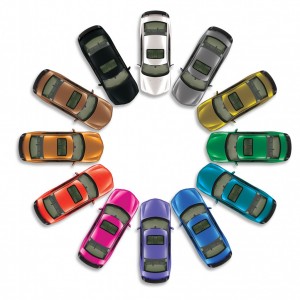
What a great question! Whether you are thinking of purchasing a new vehicle or just curious about current trends in car color choices, it’s interesting to know that “white/white pearl is the most popular vehicle color on the continent, according to the 2012 DuPont Automotive Color Popularity Report. Black/black effect comes in second, with silver finishing third” (AAA World, March/April 2013: p. 17).
The 2012 DuPont Automotive Color Popularity Report provides a global view of automotive color preferences. White, black and silver dominate most nations’ color preferences, but “in North America, white has been the number-one color from 2007 to 2012,” remarked Nancy Lockhart, DuPont color marketing manager (AAA World, March/April 2013: p. 17).
Forbes Magazine’s online article “Top 10 Most Popular Car Colors” offers more details speculating why, such as due to the influence of Apple’s technology on the current trend, since, according to Lockhart, Apple’s popular products “helped establish white as a hip color of status. Thus, Apple inadvertently helped propel white to prominence in the auto industry.” She also notes that black and white are often viewed as “as denoting status, luxury and quality.”
One consideration about car color choice and its popularity is for resale value. The Kelly Blue Book online offers good advice when thinking about purchasing a vehicle in a popular vs. non-popular color: “Put simply, today’s popular color will probably make your vehicle more popular to a buyer five years from now.” Further, “…less popular colors depreciate your vehicle’s value. By how much, you ask? That’s the tricky part. It actually can vary from hundreds to thousands of dollars depending on the vehicle and the color in question.”
For touching up nicks, scrapes and scratches, colors that are popular and standard will be easier to match whether you are inclined to fix it yourself or take it to a automotive service center.
One final resources that you may like: If you are a Do-It-Yourselfer, the Delaware Libraries ‘ database Auto Repair Reference Center may be of interest to you. It has step-by-step procedures with schematics for many cs (makes, models, years) that provide you with information about how to fix your car, from wiring and maintenance to major issues. It can even help you save money when you have your vehicle serviced since you’ll know more about what to expect. The database is free to use from your Internet-connected computer with a valid library card. The information received can be priceless!
Thank you again for asking about popular car colors. We hope this completely answers your question, but if you need more information or have other questions, please feel free to contact us online through our Ask a Librarian Delaware service (it’s 247!) or in person at your any Delaware public library. We hope to see you online again soon!
Written on: February 17th, 2013 by: cathay in Archives, Q & A's
Q: “Hi! I’m wondering how scientists track meteors like the one that hit Russia a few days ago. Is there a public notification system? If so, how reliable is it?”

On Friday, February 15, 2013 we had two historical events: the meteor that hit near Chelyabinsk, Russia and the fly-by of an asteroid. This rare double occurrence has generated many questions about the likelihood of future impacts and concerns for the devastation such can cause. Let’s take a look at some of the facts about such an event.
I’ve divided this response into four areas:
1. Definition
Online dictionaries, such as Dictionary.com are terrific for quick definitions and meanings. According to Dictonary.com, a meteor is a meteoroid that has hit the Earth’s atmosphere and disintegrated. If a meteor is big enough to hit the Earth, it is called a meteorite. Asteroids can be viewed as ‘minor planets‘, most of which “…revolve about the sun in orbits lying mostly between those of Mars and Jupiter.” Another explanation can be found through LiveScience’s 2/15/13 post by Marc Lallanilla, “What are an Asteroid, a Meteor, and a Meterorite?“
There are further details about types of asteroids and meteors which you can explore. For example, the American Meteor Society offers indepth information on their site, such as for learning about “fireballs” (a type of meteor).
2. Probability of impact and current tracking procedures
NASA reports that:
“…no human in the past 1000 years is known to have been killed by a meteorite or by the effects of one impacting. (There are ancient Chinese records of such deaths.) An individual’s chance of being killed by a meteorite is small, but the risk increases with the size of the impacting comet or asteroid, with the greatest risk associated with global catastrophes resulting from impacts of objects larger than 1 kilometer. NASA knows of no asteroid or comet currently on a collision course with Earth, so the probability of a major collision is quite small. In fact, as best as we can tell, no large object is likely to strike the Earth any time in the next several hundred years.
An article published by CNN (written by Meg Urry, Israel Munsen professor of physics and astronomy) on 2/16/13 states, “NASA scientists estimate that meteors as large as Friday’s might hit the Earth every decade or two…” But most are unnoticed, she points out, since they usually land in water (which covers about two-thirds of our planet).

Estimates about the size and weight of the meteor vary a bit, but modern technologies (such as a cell phone camera) have provided ways for audio and visual recording and are assisting NASA and scientists everywhere with ways to refine early estimates. It is now believed that the Russian meteor was larger than first thought.
There are tracking systems in place to watch for such flying objects coming our way, as noted by University of Texas astronomy professor Dr. Judit Gyorgyey Ries who remarked, “What I am excited about is that we knew it ahead of time. We knew it a year ahead of time that it’s going to happen, which shows that the search programs are really doing their job…”
One major resource you can freely refer to online is from NASA, called the Near-Earth Object Program. Here you will find more about impact risks and search programs.
3. Future tracking technology
Although there are excellent tracking systems in place, improvements can always be made not only for tracking asteroids and objects but also for deflecting any that are on collision courses with the Earth. Besides the continued work by the world’s top astronomers and NASA, a non-profit organization called the “B612 Foundation” is also dedicated to the understanding and early detection of asteroids. Among some of the educational information provided on their site, the B612 Foundation offers an infographic on the Russian meteor. Their mission is to build a space telescope (called “Sentinel”) that will be launched in 2018. As Dr. Ed Lu states while presenting at a TEDx Talk in Marin, California, “Simply put, its mission is to protect the Earth.”
4. More resources
Online newspapers are great places for current events. For example, the New York Times gives a feature article about last Friday’s phenomenon.
The Delaware Libraries’ databases also provide excellent access to newspaper and magazine articles. With your valid library card, you can quickly explore the deep web by topic, magazine/newspaper name, date, and more.
To learn more about asteroids and meteors, see the list of books and library materials you can check out.
And if you have more questions, please feel free to ask us anytime! Librarians are online 24/7 through Ask a Librarian Delaware and we have many public libraries all around Delaware that you can use. Thank you for asking your timely question!
Written on: February 3rd, 2013 by: cathay in Archives, Q & A's
Q: “What is Black History Month and when did it start?”
Thank you for your great question! 
Black History Month, also known as African American History Month, is celebrated in February nation-wide but started as a week-long tribute in the 1920s. The month-long honor officially began in 1976 with a proclamation given by then-US President Gerald Ford. As President Ford stated, “In celebrating Black History Month, we can take satisfaction from this recent progress in the realization of the ideals envisioned by our Founding Fathers. But, even more than this, we can seize the opportunity to honor the too-often neglected accomplishments of black Americans in every area of endeavor throughout our history.” Ever since, each February the U.S. President offers a Proclamation.
Further details about Black History Month is described by the Library of Congress, including its development and mission. The Library of Congress offers a teacher’s guide, images and online collections of resources to help us learn more. An additional excellent resource for educators and life-long learners is from The Smithsonian Education’s site.
Another overview is offered by InfoPlease, a freely available online encyclopedia. According to this resource (and others), “We owe the celebration of Black History Month, and more importantly, the study of black history, to Dr. Carter G. Woodson.” A biography about Dr. Woodson can be found on Biography.com’s site.
School-aged children may enjoy Time for Kids. The information about African American History Month includes inspiring stories, biographies, and more.
If you know of any teens/young adults (or are one yourself), you may like the article published by the American Library Association’s Young Adult Library Services Association on their blog, the Hub. In this posting dated February 3, 2013, you’ll find titles recommended for teens/YAs and all about African Americans amd Black History Month – with a modern view!
Additional online resources are offered through USA.gov’s site.
Locally, Delaware’s libraries and museums offer a variety of resources online and inside their buildings, and there are a couple of events you may enjoy:
The Hagley Museum offers events and displays, such as showcasing an exhibit by local artist Edward Loper, Sr. throughout the month. A good overview of Mr. Loper is offered through YouTube’s “intheupperroom.”

To top it all off, renowned poet and civil rights activist Maya Angelou is the featured speaker at the University of Delaware‘s Trabant Center on February 22, 2013. See the University’s site for ticket information and details.
Thank you again for asking your Delaware librarians. We truly appreciate your support of our libraries! Feel free to ask us anytime in person and online through our Ask a Librarian Delaware service – we’re here to help with your questions!
Written on: January 29th, 2013 by: cathay in Archives, Q & A's
Q: “Is there any difference between a regular thermometer and an electronic [digital] one? Someone told me the electronic ones are not very reliable when trying to tell if someone has a fever. Is that true?” 
Thank you for your question about the reliability of digital thermometers when compared to the glass, mercury-filled ones many of us grew up with. It’s important to know if our tools are giving us the right readings!
One of the best sources for finding information about the reliability of certain products is “Consumer Reports”. Our Delaware Libraries offer free access to this popular magazine online and in our libraries. Online, you just need your library card number (located on the back of your library card) and your PIN to log into the “Magazines” area. Once there, you can search by publication or subject to find articles.
For your question, I searched on ‘Consumer Reports’ for studies about the reliability and accuracy of digital thermometers and see that the most recent article is titled, “Hottest fever thermometers” (Nov2011, Vol. 76 Issue 11, p7-7). In this article, the authors identify some discrepancies with digital thermometers but emphasize that it is small. They state:
“The most accurate thermometers were within 0.5 degree of our medical thermometer, and all but one were at least good at repeating a retaken temperature. The exception: the lowest rated Vicks ComfortFlex.”
Further details, including the ranking of a variety of products, are provided on the article available through the Delaware Libraries, and other information about thermometers is freely available on Consumer Reports’ site.
The National Institutes of Health and the US EPA (Environmental Protection Agency) also give excellent information about today’s thermometers. They describe the move from the standard glass, mercury-filled thermometers, how to dispose of these, and what to consider when purchasing an electronic thermometer. If you are looking for a way to get rid of that old standard thermometer, the EPA suggests giving it to your primary doctor since mercury is toxic.
Batteries are another consideration since they can affect readings when low, and like all batteries, need to be disposed of properly. Not all digital thermometers have replaceable batteries, though. It’s just one more feature you may like.
One final bit of information that might come in handy is an article on how to take a person’s temperature (orally), on Drug Information Online’s site. This handy article offers suggestions too, such as writing down a person’s temperature and the time taken to keep a record.
I hope this completely answers your question; please feel free to ask your Delaware Libraries anytime, in person or online using our live, chat library service called Ask a Librarian Delaware. We hope to see you in our libraries and online using our resources soon!
Written on: January 20th, 2013 by: cathay in Archives, Q & A's
Q: “Is there an easy way to find out when I need to prune, plant, mulch, weed? I’d like a monthly gardening list that I can use online, and need ideas for making my garden great this year.”
There are many great resources for our Delaware gardens and landscapes. Let’s start with the Delaware Master Gardener’s tips, giving ideas for what to do and when to do it by week and month.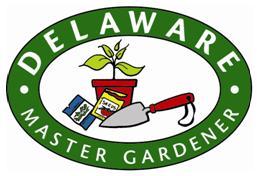
Master Gardeners share their expertise through the Cooperative Extension. You can view the Cooperative Extension for Delaware’s information by county, and take workshops that support local learning about plants that do well in our environment, what best grows when and how to diagnose/treat problems and common pests. The CE is committed to sustainable, healthy gardens and landscapes and promotes the knowledge and use of native plants.
On a Federal level, the USDA offers gardening tips per state and region.
 It’s not too early to think about preparing for spring planting. Mother Earth News gives month-by-month lists for what to plant each month; the planting season begins with February! Many avid gardeners in Delaware enjoy planning their gardens while tending to their yards and landscape even in January– weather permitting. Indoors, seedlings such as pansies can be started for those early spring cold-tolerant plants.
It’s not too early to think about preparing for spring planting. Mother Earth News gives month-by-month lists for what to plant each month; the planting season begins with February! Many avid gardeners in Delaware enjoy planning their gardens while tending to their yards and landscape even in January– weather permitting. Indoors, seedlings such as pansies can be started for those early spring cold-tolerant plants.
The Delaware Library Catalog offers many books for planning and organizing year-round planting, pruning, and tending. We find specific resources in print and on DVDs to help motivate and inspire you while you plan out each step of the way toward a beautiful garden. Here are three options:
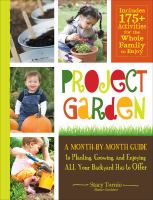
and
Before we know it winter will be gone and new flowers and seedlings will be bursting forth!
Thank you so much for your timely question to our Delaware Libraries. We’re happy to help with all your information needs and library questions, whether it’s in our library buildings or online. We’re here to help make your life a little easier!
Written on: January 17th, 2013 by: in Blog Posts, News
 We regularly receive, and appreciate, the valuable feedback from many of you about searching the library catalog. We agree that searching should be easier, with better ways to narrow down choices. And book and video lists should be easy to create, save, edit, and share.
We regularly receive, and appreciate, the valuable feedback from many of you about searching the library catalog. We agree that searching should be easier, with better ways to narrow down choices. And book and video lists should be easy to create, save, edit, and share.
That is why we are so excited to present the new, easier, and much improved Delaware Library Catalog! Please try it out and tell us what you think! Like all beta products you might encounter a glitch or two, so let us know if something doesn’t seem quite right.
Some Highlights:
What’s Next?
We expect to have text messaging alerts for holds and more soon. And in the next several months, Automatic PIN retrieval. We all forget our PINs occasionally and we are working to automatically have forgotten PINs emailed.
Written on: January 10th, 2013 by: in Blog Posts
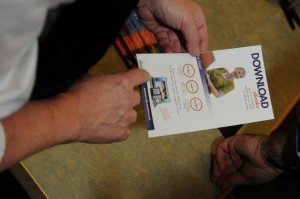 2012 was a great year for Delaware Libraries! The new Dover Public Library opened; Bear, Claymont, Frankford, Greenwood, and Wilmington Libraries all started renovations or new building projects; we began lending eBooks & eAudiobooks; and so much more.
2012 was a great year for Delaware Libraries! The new Dover Public Library opened; Bear, Claymont, Frankford, Greenwood, and Wilmington Libraries all started renovations or new building projects; we began lending eBooks & eAudiobooks; and so much more.
Here’s a look back at 2012 through the top 10 posts on our blog. Some are favorites that appear year after year and some were new in 2012.
Keep following the Delaware Libraries blog to see what we’ll explore in 2013!